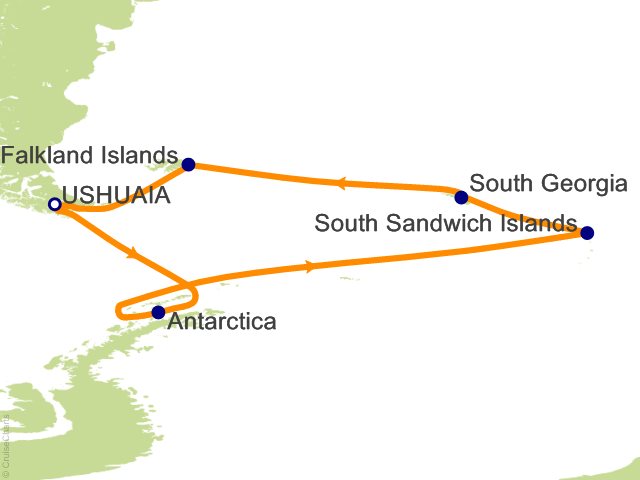On Captain James Cook's second voyage of discovery (1772-1775), he circumnavigated the globe in high southern latitudes, without seeing land, casting doubt on the existence of the Antarctic continent, which at that time was still unknown. It was during this voyage Cook discovered the South Sandwich Islands and landed on South Georgia Island, describing them as, 'Lands doomed by Nature to perpetual frigidness: never to feel the warmth of the sun's rays; whose horrible and savage aspects I have not words to describe.' He named the South Sandwich Islands for Lord Sandwich, they are considered together with South Georgia as a UK Dependent Territory, and are uninhabited. Although Cook sighted a number of the islands, several more were not discovered until Bellingshausen visited in 1819. Located about 740 kilometers (460 miles) southeast of South Georgia, the islands form a chain some 350 kilometers (220 miles) long, comprising 11 large and several smaller islands with a total area of about 600 square kilometers (230 square miles). Most are ice-capped, and the tallest peak, on Montagu Island, reaches 1,370 meters (4,500 feet). The climate is cold, with frequent snow and strong winds. The islands are volcanic in origin and some remain active. The island of Zavodovski, for instance, appears in constant eruption and reeks of rotten eggs (the volcano itself is named Mt. Asphyxia), while the islands of Visokoi, Candlemas, Saunders, and Bellingshausen all show definite signs of activity. Bristol, Cook, and Thule islands are heavily glaciated and show no signs of warmth or activity. All the islands are steep sided above the water and fall away rapidly into deep water - more than 1,500 meters (5,000 feet). In this wild environment, nature determines what we are able to do and see. If conditions allow, we hope to explore the dramatic coastline of some the islands onboard the ship or by Zodiac. Little is known about these islands, although the British Antarctic Survey has undertaken some limited biological and geological work there, mainly in the 1960s. Vegetation is very sparse. But there's at least one extraordinary wildlife spectacle: Zavodovski Island supports a chinstrap penguin colony that numbers around one million penguins on its steep volcanic slopes. Those who have seen this massive penguin colony speak of it with awe. ...
Read More




































 Track this Cruise.
Track this Cruise.  Favorite this Cruise and receive Price Alerts when the rates go up or down.
Favorite this Cruise and receive Price Alerts when the rates go up or down.





















